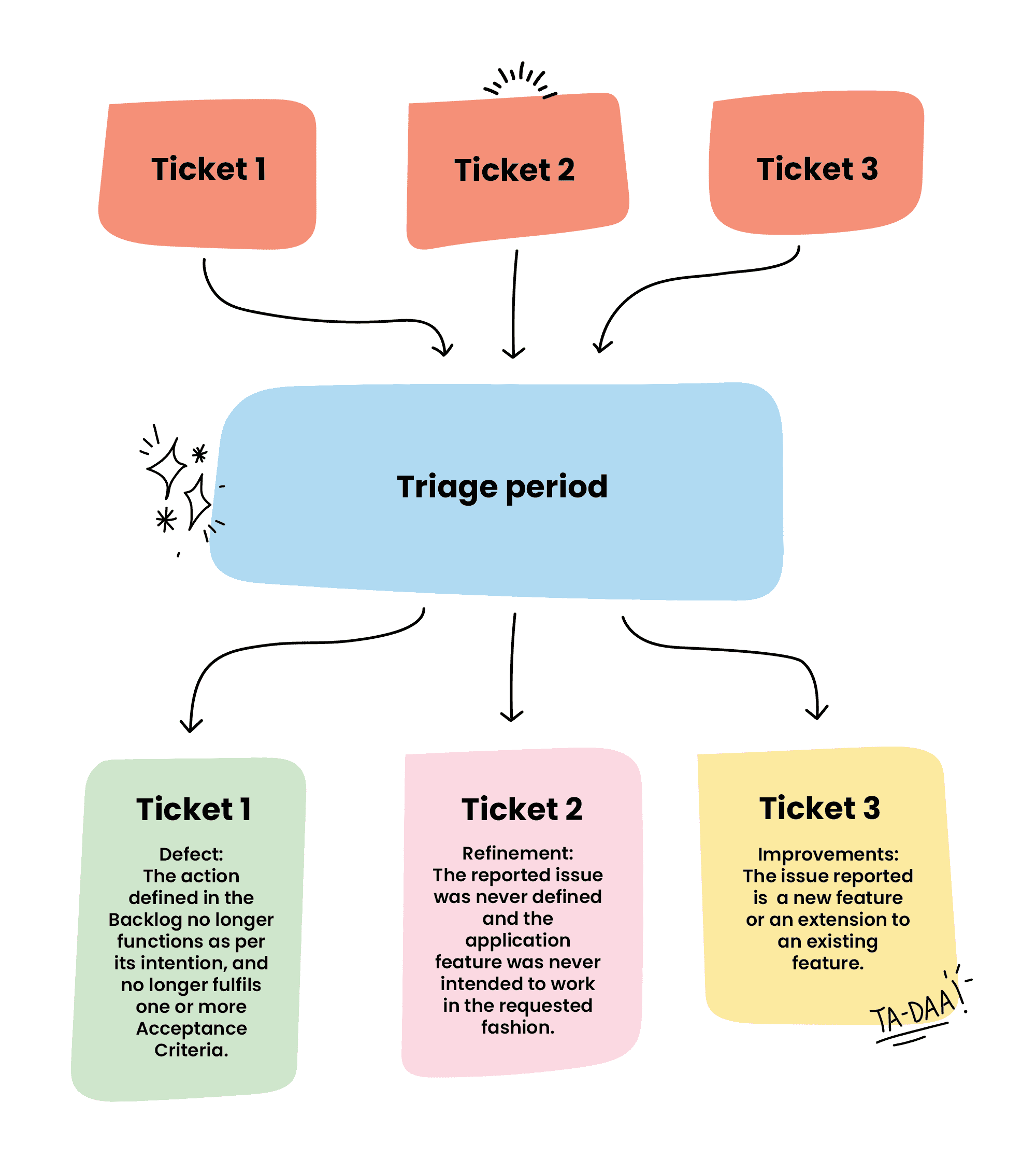The WorkingMouse support model is a little different to your conventional ‘SLA based’ support model. Rather than creating a complex tiered system, we provide a monthly, single level support model. Triage will determine if the issue falls under three categories:
To summarise the graphic, clients can log as many tickets as they like for a baseline fee and choose which of those tickets to resolve. All tickets logged receive a triage period, which is included as part of the baseline fee. It's important to understand that a release does not fall within the triage period. A beta release, the product owner performing user acceptance testing and a production release requires multiple stakeholders to align and approve the work. We recommend grouping tickets together to make efficient use of the release process (similar to an iteration).
The ticket is treated according to the category it falls within.
Defect
If the Defect is known (ie in the Backlog and not prioritised), then the client will be given an estimate to fix the issue and have the application re-released. They will then decide if they wish to engage in the work. If the Defect is new and it cannot be resolved within the triaging window then the client will be presented with an estimate to rectify the defect and will decide if they wish to proceed.
Refinements
The Refinement will be estimated and presented to the client. They will then decide if they would like to proceed with the work. The Refinement will be added to the Backlog if the client decides not to proceed at this time but chooses to add it to future development.
Improvement
As per Refinements, Improvements will be estimated and presented to the client.
Why is a triage period needed?
Nothing is built without an implementation plan and proper scoping. This is one of the most important lessons that we highlight at the beginning of a project. That same principle applies even after the first build of the application is live.
What is it?
The triage process starts with a review of the project documentation. This can mean revisting the epics and user stories from development as well as the acceptance criteria and user acceptance tests. This process helps define if the ticket is a defect, refinement or improvement. The exact nature of the investigation will change depending on the request. For example, a ticket that involves a defect will need that bug to be replicated as part of the triage. This will allow the support team to determine why the bug is occurring and present back a solution on how it can be resolved.
This may not always be the case. There may be requests that are less or more complicated than others. The most important point to note on the triage period is that a resolution path will be recommended.
Don't expect miracles in a triage period
One key point we want to communicate is do not expect complex bug fixes or new features within a two hour triage period. The key to a good relationship with your software development company is understanding and communication. The point of the triage period is to determine the best course of action going forward. In some rare cases, like changing text or an image the ticket may be able to be resolved, pending a release. But these are rare cases. The ticket will be resolved outside of the triage period, at the request of the product owner. The benefits of the single level model are outlined below.
The benefits
One of the greatest benefits of a single level support model is that control rests with the client. Different support models try to prescript the support operating rhythm. The issue with this is that over time, the level of support needed can change dramatically. For example, there will naturally be more support required as soon as an application is released due to an increase in usage. As a product owner, you may log 15 tickets in the first month versus 2-5 tickets in subsequent months. The basic support model doesn’t penalise those fluctuations.
The WorkingMouse support mission is to save the day. Support is there for those urgent and blocker issues but also helps as a reporting mechanism to build a project backlog for the next round of scope and development. Contact us if you have any further questions about the triage period and the support model.






